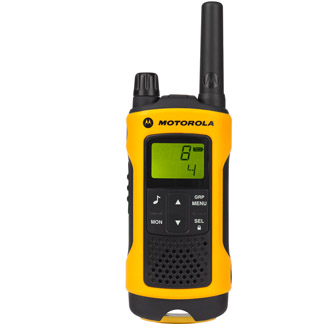Motorola Walkie Talkie Hack
And radios have the performance that we wished walkie talkies had when we were kids. I find them interesting because they aren’t quite as tied down as amateur radio bands. (They’re freaking cheap and you can give them to unlicensed users.) I’ve been surprised by the lack of hacks for these little guys. Garmin married them with a GPS unit to create a sort of hand held APRS device called the Rhino. Since I’ve got a couple of kids, I’m thinking that smacking a GPS into one of these little wrist radios with a modified (PIC based APRS encoder) would be great for tracking the family on hikes and ski/snowboard trips.

Adventure Journal Wordpress Theme. The response to Hackit has been fantastic! Each week I’m going to bring up some hardware. You guys get to pick your brains and suggest new, interesting projects. Look for a round-up and bounty post in the next week or so. So, got a better idea? Let’s hear it!
Apr 10, 2007 This is a working step by step tutorial. I am not liable for any actions you carry out with the device created. This tutorial is s This is a working step. I bought Motorola two way walkie talkie. Here in Canada the rules for allowable wattage are more lax compared to USA. $50 GMRS FRS hack more power.
Posted in, Tagged,,, Post navigation. Just a correction, transmitting on GMRS radio frequencies does require a license. Install Windows 2003 To Usb Drive. It’s not a “proof of competence” license like a ham license; the only test is whether or not the FCC can cash your check. There are interesting things you’ll learn once you get your license, though.
For example, it’s illegal to use GMRS channels 19 and 21 north of the 49th parallel from Washington to Minnesota, and other points sufficiently near the Canadian border (apparently they conflict with some Canadian military frequencies.) The thing that always puzzled me was why Garmin didn’t encode that line in the internal map, and shut off those two channels in the “forbidden zone”. I’VE ALWAYS HEARD THAT THE FRS BAND CONSISTED OF 14 CHANNELS, MEANING CHANNEL,S 1-14 AND, 15-50, IS THE GMRS BAND. THEN I HEARD THAT THE GMRS BAND IS CHANNELS 1-7, THEN 15-50, LEAVING THE FRS BAND TO BE CHANNELS 8-14, WHICH WOULD ACTUAQLLY MEAN THAT THE CHANNEL 9 IN THAT BAND COU LD BE USED FORO EMERGENCIES, NOW IF PPL ARE MONITORING CHANNEL 1 FOR EVERGENCIES, THAT MEANS THAT, TO TRANSMIT ON CHANNEL 1, THE PERSON WOULD HAVETA HAVE A G.M.R.S. LICENSE(THOUGH MOST PPL DON’T) TO TRANSMNIT ON THAT FREQUENCY EVEN THOUGH SOME FRS OPERATORS DO USE THAT CHANNEL FOR COMMUNICATIONS, WITHOUT A G.M.R.S. ACTUALLY I HAVE 2 FFRS/GMRS RADIOS, SO i CAN MONITOR CHANNEL 1 AS WELL AS CHANNEL 9 FOR EMERGENCY(JUST IN CASE IT IT ALSO USED FOR EMERGENCY AS OF ON CB CH 9). CHANNEL 1 IS A LICENSEABLE CHANNEL FOR IT IS WITHIN THE GMRS RADIO BAND SO THE EMERGENCY CHANNEL SHOULD BE CHANNEL 9, JUST LIKE IT IS IN THE CB RADIO BAND. Here’s the same comment, but in sentence case (only minor grammatical mistakes were fixed, no opinions were changed, and these are not my own opinions): 1.
I’ve always heard that the FRS band consisted of 14 channels, meaning channels 1-14 and, 15-50, is the GMRS band. Then I heard that the GMRS band is channels 1-7, then 15-50, leaving the FRS band to be channels 8-14, which would actually mean that the channel 9 in that band could be used for emergencies. Now, if people are monitoring channel 1 for emergencies, that means that, to transmit on channel 1, the person would have to have a G.M.R.S. License (though most people don’t) to transmit on that frequency even though some frs operators do use that channel for communications, without a GMRS License. Actually I have 2 ffrs/gmrs radios, so I can monitor Channel 1 as well as Channel 9 for emergency (just in case it is also used for emergency as of on cb ch 9). Channel 1 is a license-able channel for it is within the GMRS radio band so the emergency channel should be channel 9, just like it is in the CB radio band.